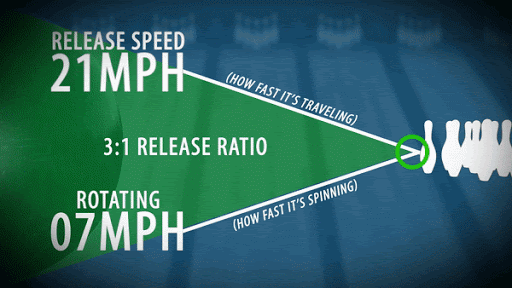
How to “Match Up” in Bowling
Scott PohlMatching up is a term loosely thrown around the bowling center. Matching up requires you to have the right bowling ball in your hand with the correct coverstock surface. While traveling down lane, the bowling ball will have the proper speed and rotation for your style of bowling and the bowling ball will go through all three phases of ball motion, skid, hook, and roll.
When the ball goes through the roll phase it will enter the pocket at an angle that will give you the best chance at striking.
Release Ratio
The release ratio is how fast the ball travels in relationship to how fast it rotates or spins.
We used an example of a bowler releasing the ball at 21mph and rotating the ball at 7mph making it a 3:1 release ratio. This means the bowling ball is rolling down lane three times faster than it is spinning.
As the ball travels down lane, the speed drops and the rotation speeds up. The ratio matches up at the pins, 3:1, and gives the bowler the best chance at striking.
Other Factors
This bowlers 3:1 release ratio matched up to the lane conditions they were bowled on. What happens if we use this same release ratio when the lanes have more oil?
The speed and rotation will not match up at the pins. Likely, the ball will skid too far and will not get in the roll phase and come up light in the pocket. So what do you do?
Change the ratio.
Reducing speed and increasing rotation will change the ratio for this lane condition.
Matching up is what every bowler is trying to do every time they throw the ball down lane. Some adjustments may be minimal and others are considered big moves. Having three different speeds you can throw the ball with consistency and the ability to throw the bowling ball with as little to as much axis rotation as you can, will allow you to be competitive on any oil pattern.
To learn more about speed control and axis rotation, check out “Practice Bowling Ball Speed Control” and “Bowling Release Adjustments.” These are great ways to improve your ability to match up to the lane conditions you are competing on.




